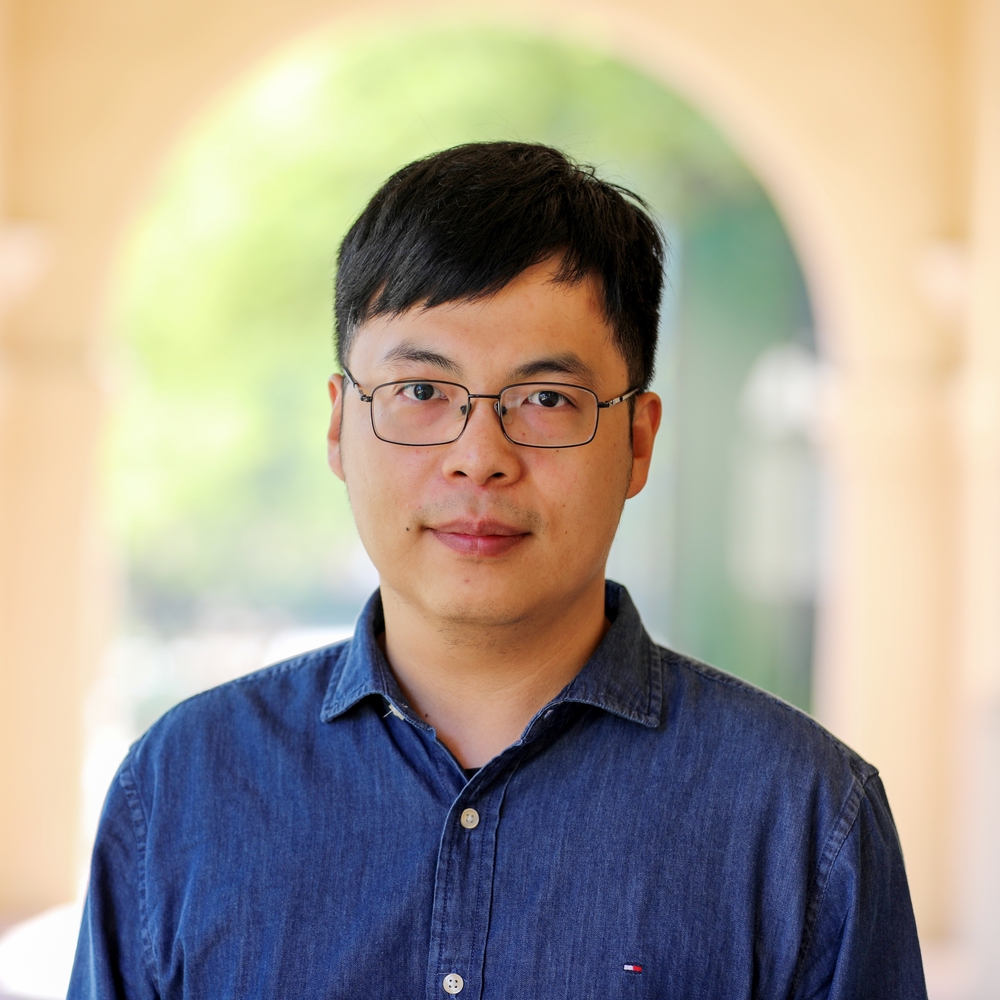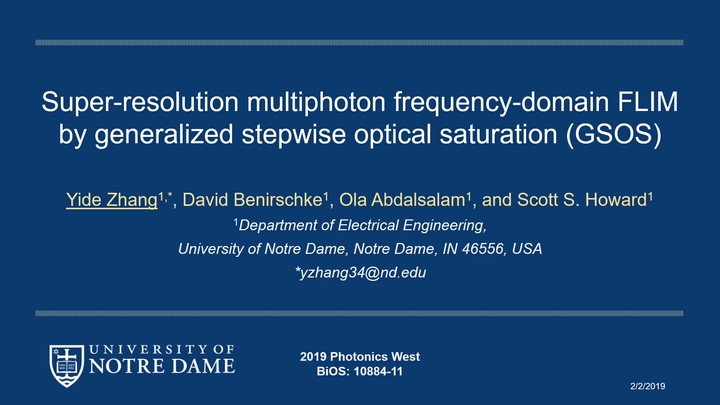Abstract
We present the first experimental demonstration of super-resolution multiphoton frequency-domain (FD) fluorescence lifetime imaging microscopy (FLIM). This is obtained through a novel microscopy technique called generalized stepwise optical saturation (GSOS). GSOS utilizes the linear combination of M steps of raw images to improve the imaging resolution by a factor of √M. Here, a super-resolution multiphoton FD-FLIM is demonstrated on various samples, including fixed cells and biological tissues, with a custom-built two-photon FD-FLIM microscope. We demonstrate simultaneous super-resolution intensity and fluorescence lifetime images of a variety of cell cultures and ex vivo tissues. Combined with multiphoton excitation, the proposed GSOS microscopy is able to generate super-resolution FLIM images deep in scattering samples.
Location
San Francisco, California USA

Assistant Professor of ECEE and BME
I am an Assistant Professor of Electrical, Computer & Energy Engineering (ECEE) and Biomedical Engineering (BME) at the University of Colorado Boulder (CU Boulder). My long-term research goal is to pioneer optical imaging technologies that surpass current limits in speed, accuracy, and accessibility, advancing translational research. With a foundation in electrical engineering, particularly in biomedical imaging and optics, my PhD work at the University of Notre Dame focused on advancing multiphoton fluorescence lifetime imaging microscopy and super-resolution microscopy, significantly reducing image generation time and cost. I developed an analog signal processing method that enables real-time streaming of fluorescence intensity and lifetime data, and created the first Poisson-Gaussian denoising dataset to benchmark image denoising algorithms for high-quality, real-time applications in biomedical research. As a postdoc at the California Institute of Technology (Caltech), my research expanded to include pioneering photoacoustic imaging techniques, enabling noninvasive and rapid imaging of hemodynamics in humans. In the realm of quantum imaging, I developed innovative techniques utilizing spatial and polarization entangled photon pairs, overcoming challenges such as poor signal-to-noise ratios and low resolvable pixel counts. Additionally, I advanced ultrafast imaging methods for visualizing passive current flows in myelinated axons and electromagnetic pulses in dielectrics. My research is currently funded by the National Institutes of Health (NIH) K99/R00 Pathway to Independence Award.
